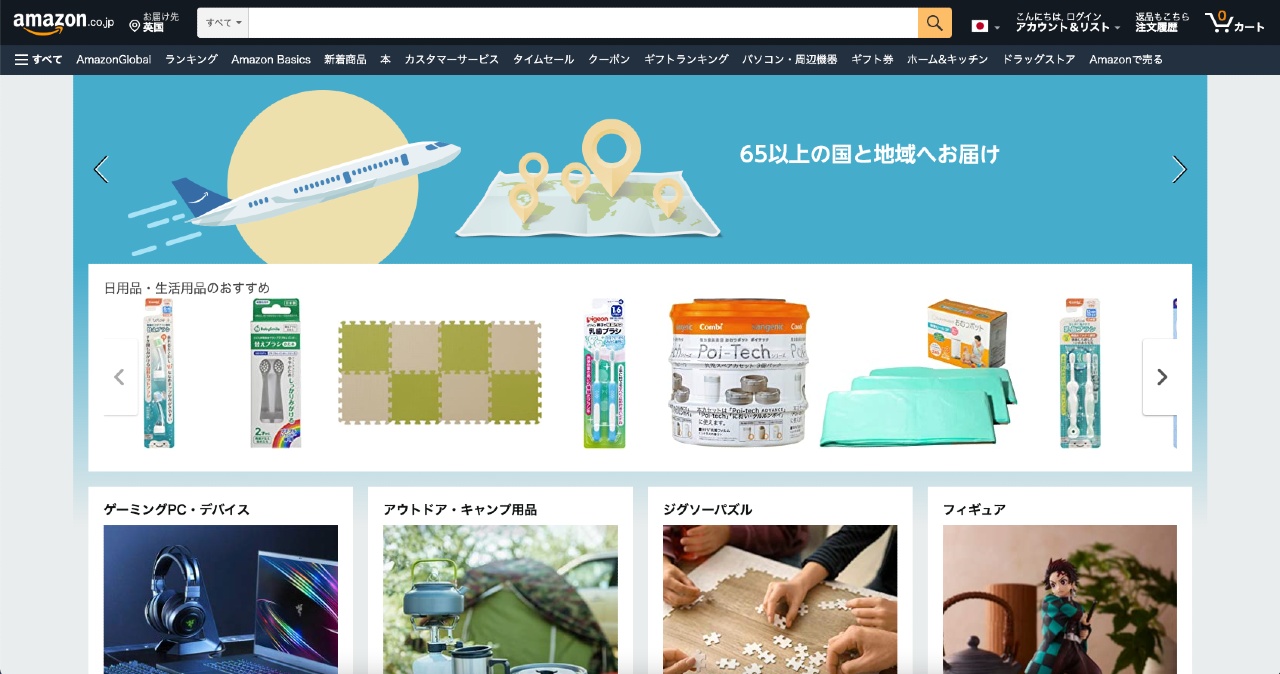Expanding into the Japanese ecommerce market is a dream for many businesses. Key attributes such as its huge internet penetration level, highly urbanized population, and developed economy, make it one of the most rewarding arenas for online sellers today.
Table of COntents
Why Ecommerce in Japan?
Its compact size, well-established infrastructure, and the almost universal ownership of digital devices also means businesses operating here are well placed to connect with a large (and growing) pool of online consumers — increasingly moving away from a long love affair with ‘brick and mortar’.
As a result of many of these key drivers, Japan is now the fourth largest ecommerce market behind only China, and the UK the U.S with market volume projected to grow through 2024.
But before you’re able to jump in, understanding which ecommerce platform to invest your time and money into is critical for reaching Japanese online shoppers. If you haven’t decided already, or are considering switching from your current platform, take a look at our breakdown of what are the biggest and most popular ecommerce platforms in Japan in today: Amazon Japan, Rakuten, and Yahoo! Shopping.
Top Ecommerce Platforms in Japan
*Tap or Hover on the graph below to see details.
Amazon
Amazon is typically where most international sellers begin their journey into Japan. With its American roots and familiar ‘look and feel’, it’s much easier for newcomers to get started here while they’re still getting to grips with the more demanding registration, language, and localization requirements of other popular Japan ecommerce platforms.
Ultimately, Amazon Japan has had a major disruptive effect on the domestic e-commerce market since its arrival. Investing heavily in infrastructure over the last decade, it now has around 12 distribution centers and four Amazon Prime centers in the nation.
WEBSITE FACT SHEET
| Country Traffic Rank | 6 |
| Global Traffic Rank | 43 |
| Total Visits | 632.91M |
| Category Rank (Marketplace) | 1 |
*Data sourced from SimilarWeb’s October 2021 domain overview
Associated Costs
For sellers, Amazon offers two plans. Their Individual plan comes with no monthly subscription fee, but a small required payment per item sold, plus referral fees, which varies by category. Alternatively, sellers dealing with larger orders each month can opt for the Professional selling plan, which costs around 5,000 JPY monthly, plus referral fees. This means you don’t pay a per-item fee and are able to add an infinite amount of new products to the Amazon catalog.
Additional fees also apply when you use the Fulfillment by Amazon (FBA) feature, which functions just like it does in other markets by helping sellers pack and ship goods to buyers, as well as provides customer service for your products for order processing, delivery, and returns (one of the biggest benefit for new merchants int Japan).
You will, however, need to handle general customer inquiries and questions directly through your manager account. And you’ll also need to pay storage costs charged for all units stored in an Amazon Fulfilment Center, based on your daily average volume (measured in cubic meters).
How to Sell on Amazon
Unlike other Japan ecommerce options, you don’t need to have a Japanese bank account or domestic business registration to sell your products on this platform, and you don’t need to set up an online storefront within the platform itself. As such, it’s generally the most foreigner-friendly of the large ecommerce giants currently operating in Japan.
With an interface allowing you to create and edit your listings in English, it offers a lower barrier to entry with additional English support services thrown in to help smooth out your landing.
By selling on Amazon Japan, you also gain access to the platform’s many advertising products, such as Display Ads, Custom Ads, Video Ads, Lightning Deals and the ability to appear in the Sponsored Products section for greater visibility.
We’ve found that when registering for Lightning Deals for our ecommerce clients during key dates throughout the year, it’s possible to achieve an increase in sessions of up to 229% MoM in Japan.
If you want a more comprehensive guide to setting up on Amazon in Japan, check out our blog: How to Become an Amazon Seller in Japan – FBA, Account Set-up, Logistics and More!
Is Amazon the Right Japan Ecommerce Platform for Your Brand?
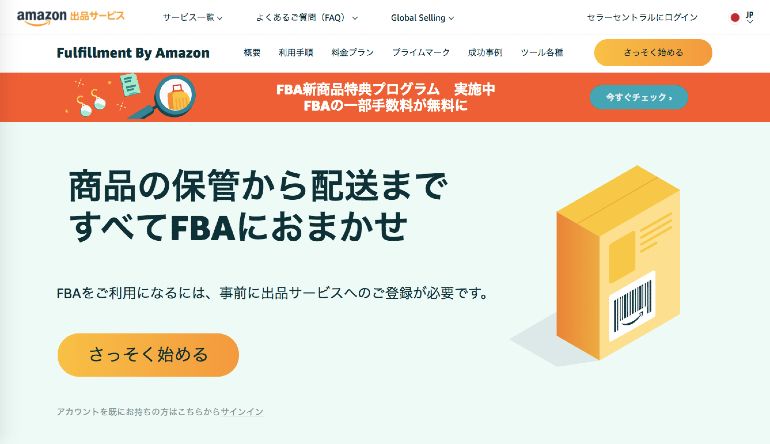
As you’ll know, there’s almost nothing that Amazon doesn’t sell. However, with such an eclectic array of items on offer, and a myriad of competitors selling very similar products to your own brand, the competition is real. Amazon.jp sells private label products alongside third-party items, creating even more competition for sellers.
Not only does this put greater pressure on you to distinguish your product listings and photography in an already competitive market, but you may find yourself in a bidding war when placed directly next to your competitors in search results — something to consider when calculating your profit margin after shipping and storage costs.
Additional Features
- Fulfillment by Amazon comes with one of the most valuable assets you can have when operating an ecommerce business in Japan: customer service support in the local language.
- Amazon fulfillment also provides gift wrapping for products related to Japanese traditions and events — a big draw for Japanese buyers.
- Your customers can also benefit from Amazon Points, a system that allows buyers to use earned points to pay for products.
HB Pro Tip: Regardless of your Japan ecommerce platform choice, remember that the presentation of your products is crucial. It’s important that you have high quality images that show as much detail as possible, and product descriptions that are fully Japan localized and catered to your target audience.
Japanese consumers will naturally link the quality of the listing with the quality of the product, as well as its suitability for their needs. This means that basic translations won’t cut it, and all product weights, sizes, measurements, and categories need to be adapted to Japanese standards.
Rakuten
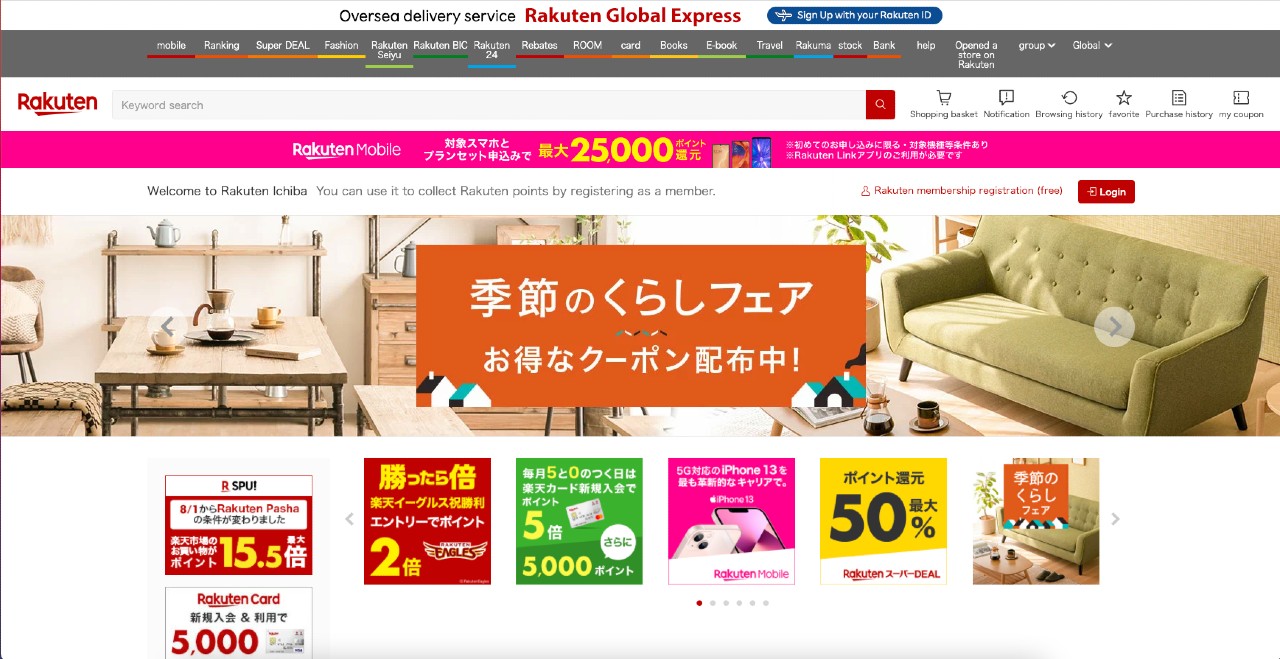
Japanese consumers don’t necessarily follow suit with global trends. While certain Western products are popular here for their perceived quality and “exotic” nature, merchants need to be fully aware they’re dealing with a single-language culture (Japanese…) with an aversion to generic products and marketing — so simply replicating your domestic ecommerce strategy and marketing won’t help you reach your true potential here.
With that said, Rakuten, Japan’s homegrown ecommerce giant, is the next important candidate to consider. With around 49,000 shops and a quarter of Japan’s total ecommerce market share, it’s certainly worth the effort of learning the ways of this highly Japanese-focused online shopping platform.
The first thing you’ll need to learn is it’s not as simple as hopping over to ‘Japan’s Amazon’, as you might have been told. Instead of handling many aspects of the buying process on behalf of its sellers like Amazon, Rakuten operates a partnership approach, allowing business owners to manage their own inventory, set up their own online store, and handle customer service issues independently of the ecommerce platform. This lets you offer a more personalised service to your Japanese customers, but also places greater pressure on your localization and customer service capabilities.
WEBSITE FACT SHEET
| Country Traffic Rank | 7 |
| Global Traffic Rank | 47 |
| Total Visits | 563.88M |
| Category Rank (Marketplace) | 2 |
*Data sourced from SimilarWeb’s October 2021 domain overview
Associated Costs
Rakuten has a few different types of fees for online merchants. The first is a registration fee as well as a monthly subscription fee, which allows you to set up your manager account. Next, depending on the product category of your items, you’ll need to pay a percentage of every item sold as a commission fee. This can vary considerably depending on what you’re selling.
In terms of shipping and packaging, you’re free to handle that yourself, by using one of a number of potential shipping partners who specialize in fulfilling orders for Rakuten sellers.
How to Sell on Rakuten
As mentioned, Rakuten isn’t an ‘open’ e-commerce marketplace like Amazon and other ecommerce platforms around the world. Some describe Amazon as a ‘vending machine’, offering customers quick access to cheap products, compared to Rakuten’s ‘shopping mall’ style experience, particularly well-suited to Japanese consumers.
The main difference for sellers is you’re required to register (or apply) for seller status in order to operate in the marketplace, which can be done on the official website by filling in the online form. However, the biggest catch here is you’ll need to first find a local partner to work with, or register your business in Japan, with a new local bank account..
Next, you’ll need to build a digital storefront, which, depending on how you look at it, can be the best or most troublesome feature of Rakuten — especially for overseas sellers new to the market. If you’re keen to truly maximise your sales potential on Rakuten with localized ecommerce content, graphics, incredible product photography, and the general magic of your brand projected across your dedicated sales page, you’ll do well here.
On the other hand, if you don’t have the time or resources to build a non-generic store page, you’ll likely suffer low sales conversions from Japanese consumers who expect a greater amount of quality and personalisation in their online shopping experiences.
Interested in Japanese Web Design Preferences?
Is Rakuten the Right Japan Ecommerce Platform for You?
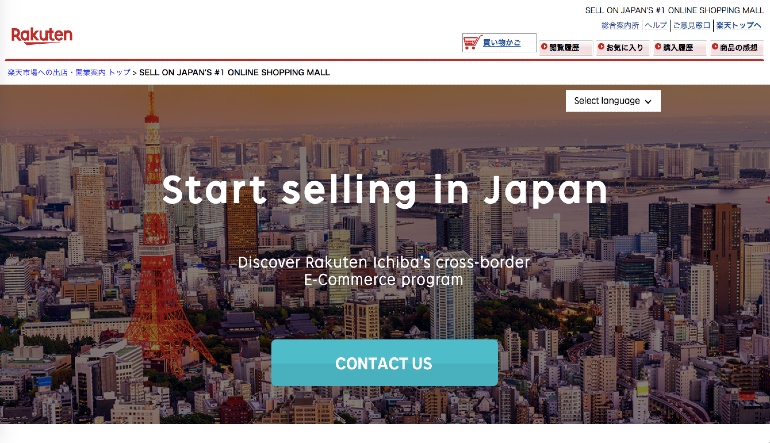
Companies willing to invest considerably in their online Rakuten presence and branding through their storefront and listings can benefit from up-selling their products through their presentation and promise of quality. Unlike Amazon, Rakuten gives brands more control over how they portray themselves to their audiences. This can make it a great online location for companies with an existing brand presence, and a harder place for sellers who aren’t able to distinguish themselves from competitors.
Additional Features
- Rakuten operates a loyalty-based membership program, which offers members various benefits like cashback offers and Rakuten Super Points.
- Rakuten regularly offers coupons to its customers that vary depending on the time of the year and holiday season.
HB Pro Tip: Customer service in Japan is something that should be taken very seriously. While you’ll be aware of the phrase ‘The Customer is King’ wherever your home territory is, Japan goes one step further with their expression ‘Customers Are Gods’. When trying to keep your Japanese customers happy, consider the following advice:
- Tend to each customer’s feedback personally
- Avoid generic communication templates
- Always communicate in Japanese
- Follow rules of politeness (address customers with the appropriate level of courtesy or run the risk of seeming rude)
Find Out More About the Japanese Consumer Market
Yahoo! Shopping
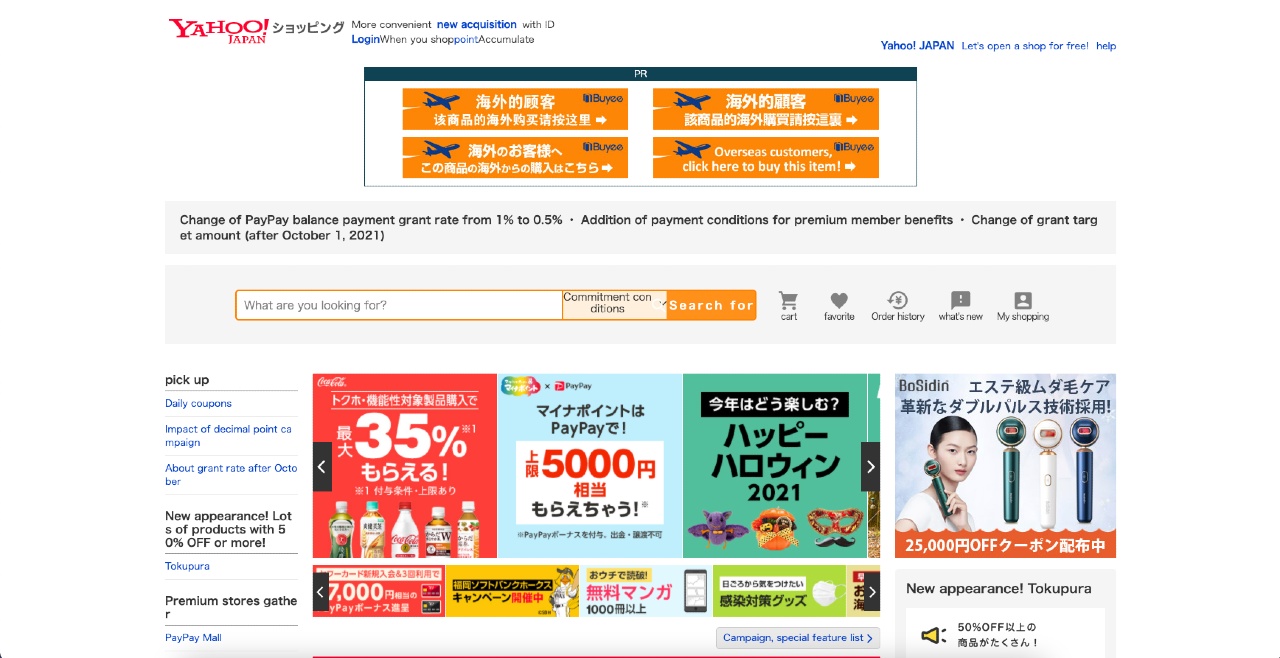
Although Yahoo!’s global presence has somewhat diminished since its former glory days, it is still huge in Japan, and so is its online shopping division, Yahoo! Shopping and Yahoo! Auction. Both are part of the diverse web portfolio of Yahoo! Japan, which gathers over 90 million monthly visitors, according to SimilarWeb.
Yahoo! Shopping, estimated to attract around 28 million monthly visitors, is the company’s more traditional ecommerce platform, selling anything from electronics to toiletries from thousands of merchants, domestically and across borders. Yahoo! Auction is it’s popular ‘flea market’ counterpart, where consumers can sell and buy items that are not typically found on Yahoo! Shopping, using the ‘Ebay’ model.
The biggest benefit both these platforms have is the fact that searchers are redirected through the Yahoo! search engine to the ecommerce sales floor. And as Yahoo!’s presence is still very strong in Japan, this allows you to tap into one of the largest pools of internet users in the whole country.
WEBSITE FACT SHEET
| Country Traffic Rank | 36 |
| Global Traffic Rank | 365 |
| Total Visits | 107.39M |
| Category Rank (Marketplace) | 3 |
*Data sourced from SimilarWeb’s March 2020 domain overview
Associated Costs
Yahoo! Shopping doesn’t require you to pay a registration or monthly fee for setting up your store on their platform, or even commission on your sold items, however, you will have to pay fees and costs that cover the items below:
- Initial cost
- Monthly system usage fee
- Sales loyalty
- Store point funding
- Campaign funding
- Affiliate Partner Reward Source
- Affiliate fee
How to Sell on Yahoo! Shopping
Like Rakuten, Yahoo! Shopping requires foreign companies who want to sell on its ecommerce platform to register their company locally, or work with a local agency to set up accounts on their behalf. As part of the registration process , you’ll need to submit official documents proving your company’s legal status in Japan and even copies of relevant tax documents.
In addition to this, sellers are required to establish a domestic support base where customer service can be handled locally, with a dedicated Japanese telephone number. Due to these requirements, it’s common for foriegn merchants to work closely with local partners who can help them navigate the local ecommerce landscape and handle shipping and customer service issues, according to Yahoo! Shopping’s policies.
Is Yahoo! Shopping the Right Japan Ecommerce Platform for You?
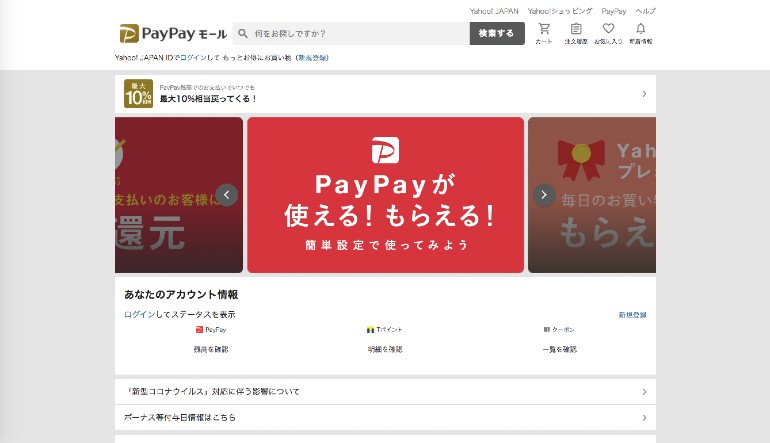
If you’re willing to jump through all the hoops in bringing your business operations to Japan, in accordance with Yahoo! Shopping Japan’s requirements for local business status, then there’s no doubt your products can benefit from the potential exposure to millions of Japanese users. Add in a solid ecommerce marketing and localization strategy and there’s even greater potential for the success of your brand.
However, be warned that once you’ve set up your online ecommerce channels in Japan, there’s still a significant amount of maintenance and ecommerce SEO optimization needed to make sure your products, brand, and store listings adapt to changes in the market through fully localized, and trend adjusted Japanese content.
When conducting SEO initiatives for our clients, we’ve found that businesses in the Housing and Real Estate industry, for example, can achieve a healthy CTR uplift from 3.2% to 5%, when engaging in proactive and fully-localized optimization activities, as part of an ongoing strategy.
Additional Features
- Yahoo! Shopping offers coupons that are only applicable to stores that have recently opened, such as the ‘Half Price Coupon & Toku Toku 2 WEEKs’.
- If you’re eligible, you might be able to gain access to PayPay Mall, an online section of the website where carefully selected brands can offer their products, offering additional discounts and benefits to users.
HB Pro Tip: Fast delivery times are crucial. And so is accuracy in delivery time predictions. Both these things together will keep you on your toes when handling stock, packing, and delivery logistics as part of your Japan ecommerce activities.
24 Hours for standard deliveries is expected across most sites for small-to-medium sized products. Larger products may require delivery slot planning, but will also require speed and efficiency. If you’re too relaxed in this area, be prepared for some prompt negative feedback online and potential damage to your reputation as a reliable seller.
Looking for Ideas on How to Kickstart Growth in Japan?
Where Else Do Japanese Customers Shop?
As well as online shopping malls Japanese customers also shop in several other places too.
| Shopping Malls (Amazon, Rakuten etc.) | 94.2% |
| Manufacturer’s Brand Websites | 40.9% |
| Home Electronic Stores | 33.1% |
| Online Auction Sites | 27.3% |
| Flea Market Websites and Applications | 24.9% |
| Supermarkets | 11.4% |
| Retails Stores | 11.3% |
| Department Stores | 7.9% |
| Convenience Stores | 5.6% |
| None of the Above | 3.1% |
Source: Statista
Learn more about the Japanese B2C and B2C ecommerce platform landscape in our blog: Top Ecommerce Websites in Japan – Popular B2C & C2C Marketplaces
A Multi-Channel Approach to Japan ECommerce

Do you need to choose just one Japanese ecommerce platform? Not exactly. If you think you’re up to the challenge of juggling multiple distribution channels and logistics, you can consider building a larger retail network across different platforms for increased visibility and wider brand awareness.
Most Popular Flea Market/Auction Platforms In Japan
| Mercari | 63% |
| Yahoo Auction! | 58.4% |
| Rakuma | 29.1% |
| PayPay Furima | 18.7% |
| Minnie | 7.5% |
| Creema | 6.3% |
| Booth | 4.6% |
| Oatmart | 4.6% |
| Shoppies | 4% |
| Noojma | 3.6% |
| BoonBoon! Market | 3.4% |
| Zeni no Furima | 3.3% |
| Kante | 3.3% |
| Let | 3.1% |
| Others | 0.7% |
Source: Statista
Attention to Detail
Bringing together all of our advice so far, we recommend keeping ‘Attention to Detail’ in the forefront of your mind as you plan your Japan ecommerce activities and choose your ecommerce platform. More than many places around the world, Japan believes in the importance of quality and detail, extending into many different aspects of interaction and culture.
Whether you’re going with Amazon, Rakuten, Yahoo! Shopping, or any of our other notable mentions, make sure you don’t cut corners, and do the research necessary for providing your buyers with great quality products, fully localized SEO ecommerce content, and exceptional customer service.
If all of this sounds a little intimidating, consider working with a local partner or Japanese marketing arm that can help you make sure nothing slips through the cracks as you capitalize on one of the fastest growing ecommerce markets in the world. It’s not a simple venture, but it’s certainly worth it!
Steal Our Best Ideas
Actionable insights straight from our data
Here are a couple quick discoveries we’ve pulled from the data of our latest projects. Why? To help you make the changes you need to gain traction in the Japanese market! As an agency, we are always digging deeper and searching for those little yet significant tweaks that will push our clients to the next level of success. If you need a partner to help you identify and implement changes like these on a monthly basis, let us know!
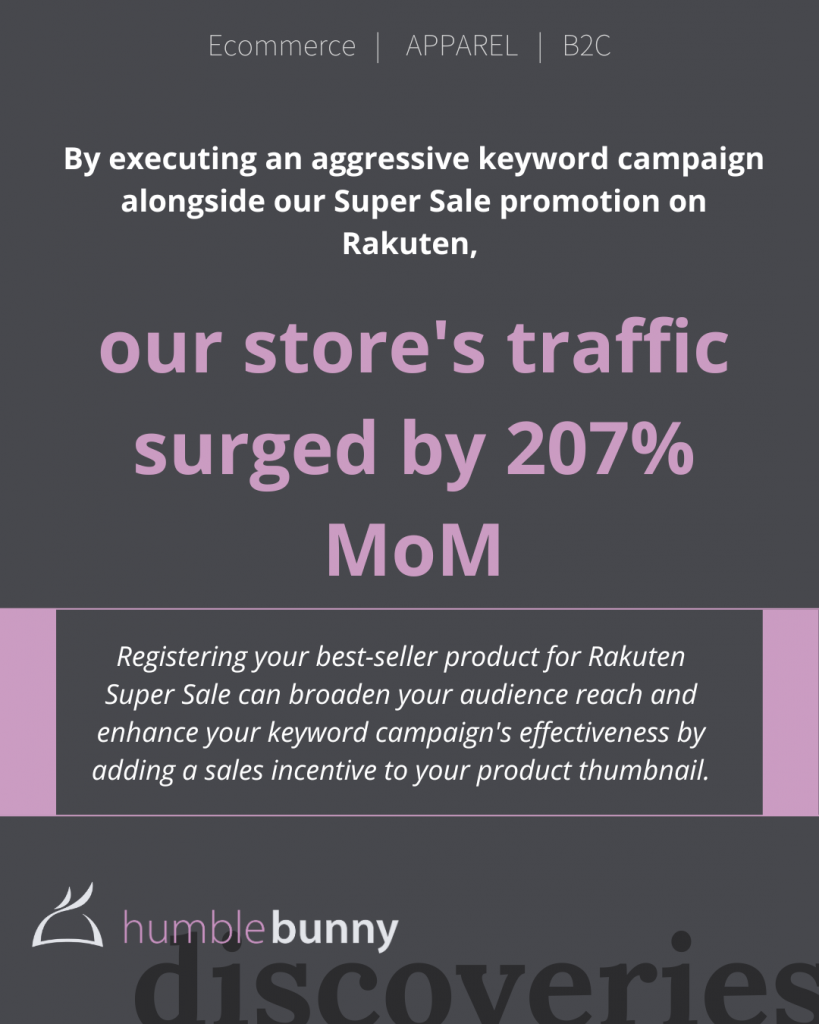
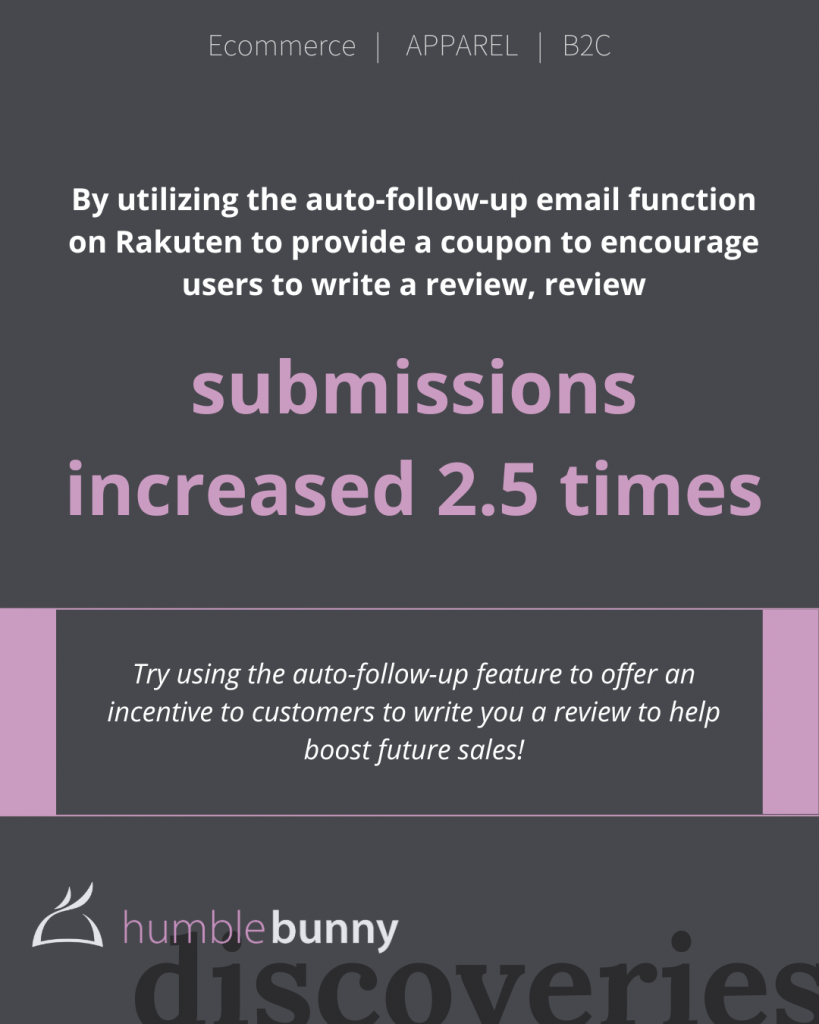
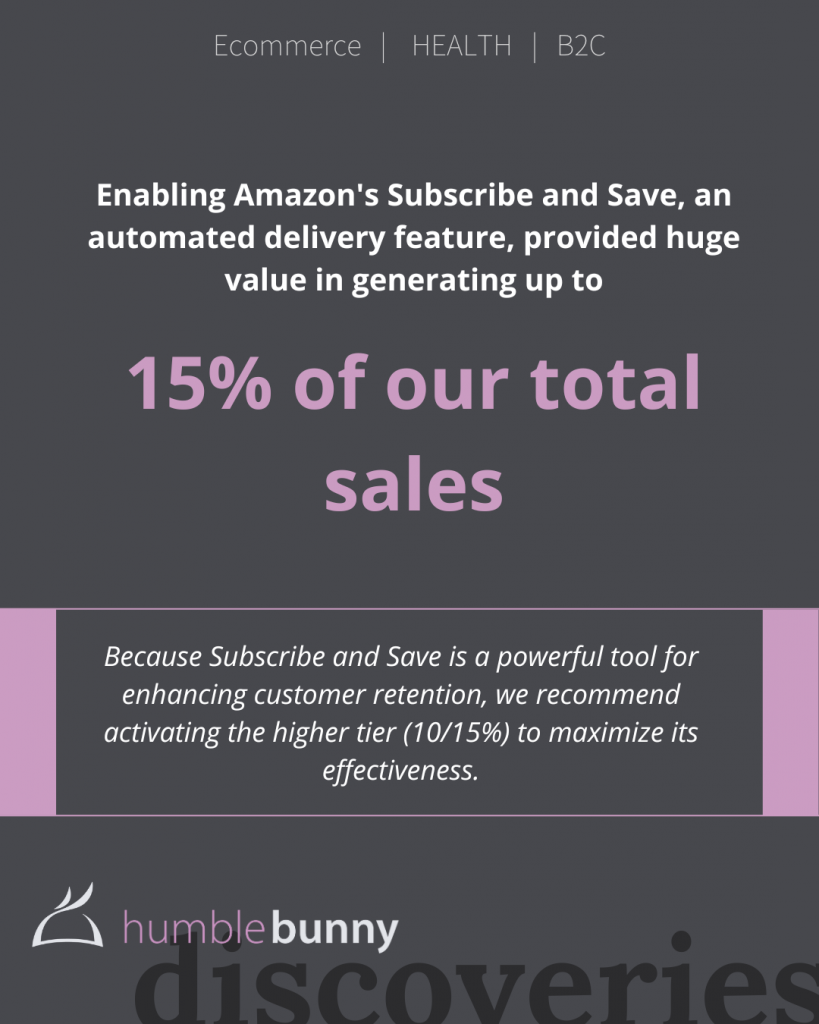
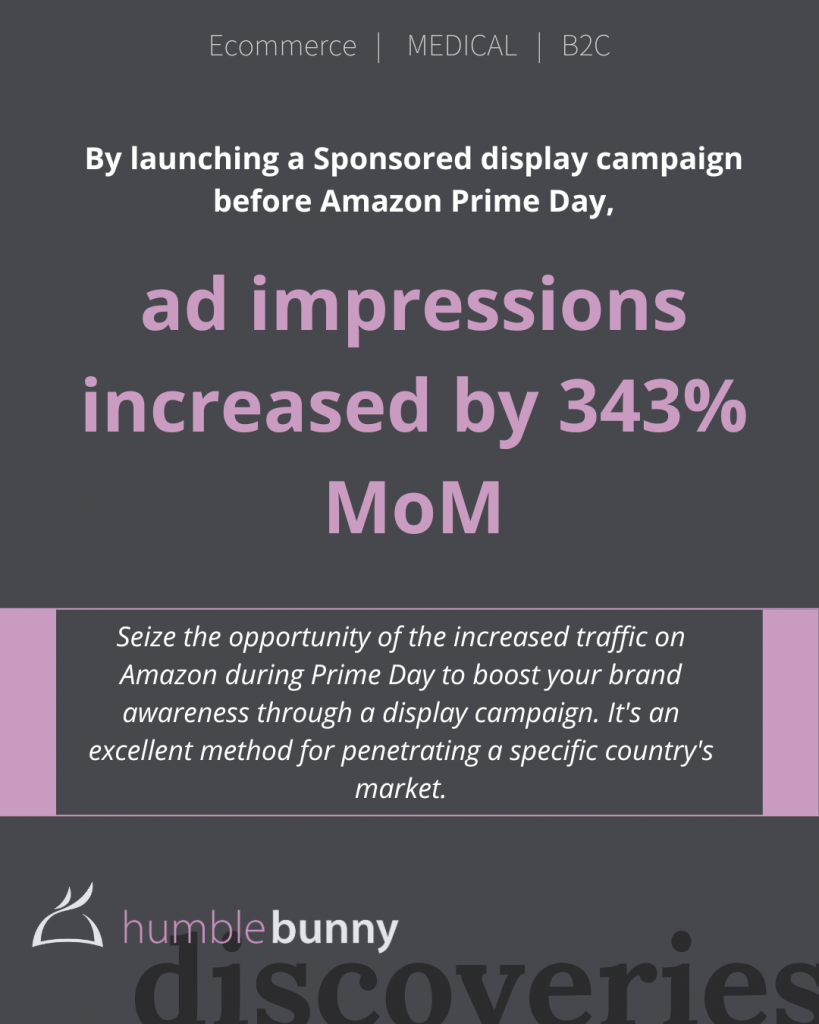
Need help gaining traction for your business in Japan? Let’s chat on how we can help.
